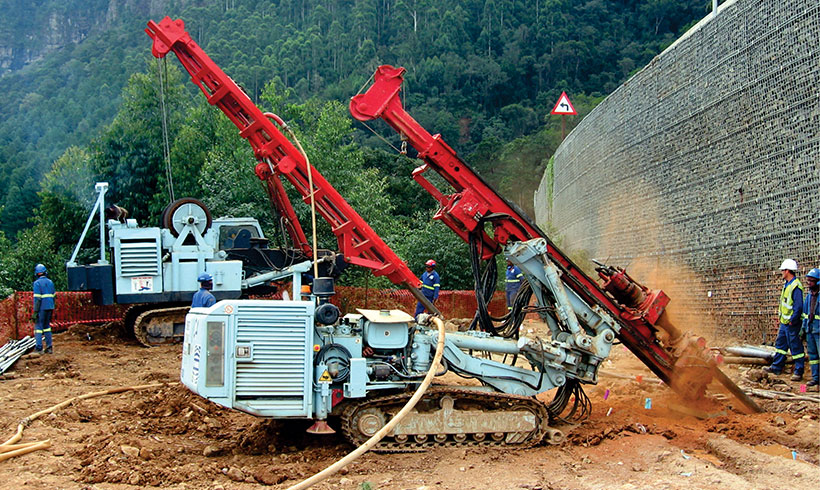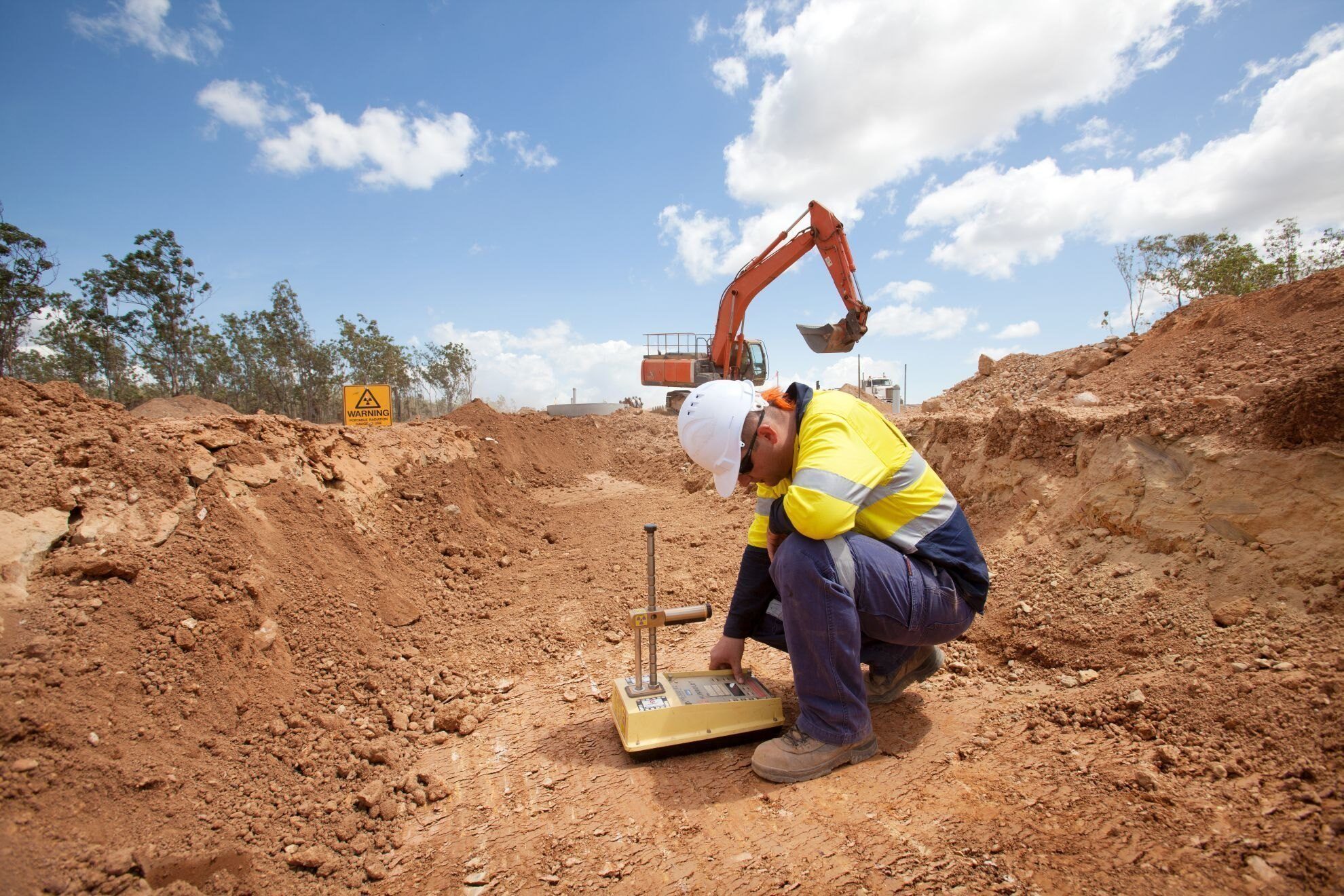5 Easy Facts About Geotechnical Engineering For Construction Projects Explained
Geotechnical Engineering For Construction Projects Can Be Fun For Anyone
Table of ContentsHow Geotechnical Engineering For Construction Projects can Save You Time, Stress, and Money.The 30-Second Trick For Geotechnical Engineering For Construction ProjectsExcitement About Geotechnical Engineering For Construction ProjectsWhat Does Geotechnical Engineering For Construction Projects Mean?An Unbiased View of Geotechnical Engineering For Construction Projects
During the examination, it is important to pierce at the required depth and the required number of holes as per the recommendation of the Canadian Foundation Style requirement. Occasionally, the proprietor could conserve some Geotechnical Examination price but wind up spending greater than the anticipated throughout the building and construction cost.The obligations of the geotechnical consultant involve offering material screening for building and construction assistance. Geotechnical Engineering for Construction Projects. Geotechnical designers analyse all the field examination records to make certain that construction is going on according to the job spec. Throughout building and construction, a confirmatory test for soil compaction is done on-site to guarantee that no future settlement takes place
After the concrete is put -7 days and 28 days- tests are carried out on concrete samples collected from the website to make sure that the concrete poured meets the layout requirement. Asphalt core is taken after the Asphalt is laid and compacted to confirm that it fulfills the layout requirement. All laboratory examination records are analysed by the Geotechnical Engineer to guarantee that it satisfies the project specification.
Geotechnical Engineering For Construction Projects - The Facts

Geotechnical engineering plays a crucial function in making certain the stability of building and construction jobs. Learn just how it impacts layout and general project success. Geotechnical design is a vital branch of civil design that focuses on recognizing the behavior of planet products, such as dirt and rock. It involves evaluating subsurface problems to make sure that a building's foundation or framework is steady and safe and secure.
For a reliable structure and a smooth building procedure, depend on to offer the proficiency you require. Contact to get specialist guidance and geotechnical solutions customized to your next job.
Geotechnical Engineering For Construction Projects Things To Know Before You Get This
When starting a land development project, understanding the ground underneath your feet is as critical as the structures you plan to build above it. Our Geotechnical Engineering group analyse the ground, ensuring it appropriates for the recommended development while supplying you with the details required to fulfill your project goals.
Geotechnical Engineering takes a look at the formation of the ground, as it is the building obstructs for all tasks. Where frameworks require to be developed relative to the ground conditions; ground conditions (e.g., soft ground) may call for reinforcing depending upon the size of the desired framework. Before building, you require to learn about the groundwater, dirt framework, and liquefaction chance of your land.
For sites that are not connected on the regional authority infrastructure added site examinations would certainly be required to give technical inputs for on-site stormwater and wastewater. We have actually experienced Geotechnical Engineers based in each workplace, supporting your geotechnical needs across the country. Reach out to us to go over just how we can support your following job.
These reports are tailored to satisfy the details demands of a task and consist of design parameters and guidance for the next page building and construction of a variety of man-made frameworks. As well as giving working as a consultant solutions covering areas such as incline stability and load-bearing capabilities for various materials, these engineers take on r & d tasks to improve techniques, devices, materials expertise and analysis covering entire lifecycles.
9 Easy Facts About Geotechnical Engineering For Construction Projects Explained

However, prices of pay generally enhance as your understanding and abilities grow, with guidelines directing to a graduate starting salary of between 18,000 and 28,000 each year in the UK. This climbs to 26,000 to 36,000 with a couple of years of experience and then reaching 40,000 to 60,000+ for senior, legal or master engineers.
With the best application it is feasible to understand the career and gain access to a difficult yet gratifying and important job. A geologist would require to retrain to become a geotechnical engineer, although there is a lot of cross-over in between both professions, which can make this much easier - Geotechnical Engineering for Construction Projects. Geologists require to have an understanding of soils, rocks and other products from a scientific viewpoint, while geotechnical engineers story their knowledge of issues such as soil and rock auto mechanic, geophysics and hydrology and apply them to design and environmental jobs
When beginning, these engineers will certainly tend to work on less complicated tasks, developing knowledge and experience prepared for even more challenging job later on. Geotechnical engineers have a tendency to be experts in particular locations as they grow in experience, focusing on certain infrastructures such as railways, roadways or water. These designers also collaborate with renewable energy, offshore and onshore oil and gas, nuclear power, and extra.
Geotechnical Engineering For Construction Projects Can Be Fun For Anyone
The time taken to become a geotechnical designer depends on more where you are based, where you research study and what level of education you desire to acquire before going into the workplace. Generally-speaking it takes 3-4 years to get to the fundamental requirements to begin an occupation as a geotechnical designer.
These procedures make it possible for specialists to assess a host of dirt auto mechanics including weight, porosity, void-to-solid fragment ratio, permeability, compressibility, optimum shear stamina, bearing ability and deformations. If the framework needs a deep foundation, designers will utilize a cone infiltration test to approximate the amount of skin and end bearing resistance in the subsurface.
When evaluating an incline's balance of shear stress and shear stamina, or its ability to hold up against and undertake movement, rotational slides and translational slides are generally taken into consideration. Rotational slides fall short along a bent surface, with translational slides taking place on a planar surface. An expert's objective is to identify the problems at which an incline failing can occur.
Usually, findings recommend that a site's dirt need to be treated to boost its shear strength, tightness and leaks in the structure prior to design and construction. When it comes time to lay out navigate to this site foundation strategies, professionals are progressively concentrated on sustainability, more particularly just how to reduce a foundation's carbon footprint. One tactic has been to change 20 percent of a structure's concrete with fly ash, a waste product from coal fire power plants.